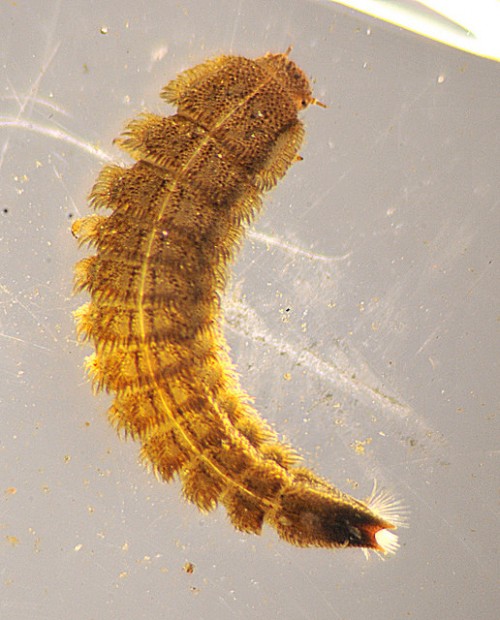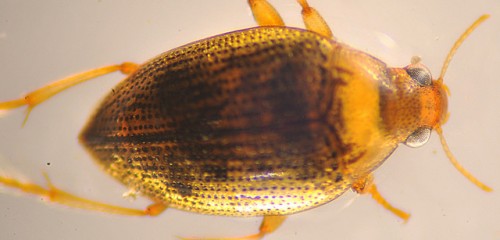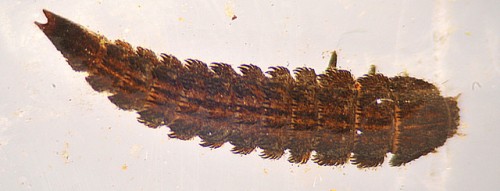- 97 species in North America
- Both larvae and adults are aquatic
| Phylum: | Arthropoda |
| Class: | Insecta |
| Order: | Coleoptera |
| Family: | Elmidae |
Identification Tips:
Larvae
• Body stout, elongate and usually dark brown
• Covered in small protrubrances
• 3 pair of segmented legs with 4 segments + 1 claw
• Trap door at the end of the abdomen protects gills from abrasion when closed
• 3-8 mm, occasionally longer
Adults
• Hard bodied, dark brown or reddish, metallic tints
• Head may appear partially withdrawn into body
• Numerous rows of small indentations on back
• Long legs relative to body, 2 claws at end
• 1-8 mm
Life History:
• Most occur in swift currents of streams and small rivers
• May live 5 to 6 years; half as larva
• Found among rocks, but also in exposed roots, under bark or in submerged moss
• Most abundant in cool clear water
• Feed by scraping or collecting periphyton or detritus
• Require high levels of dissolved oxygen
• Adults breathe through skin
• New adults fly to disperse to new habitat
• Lose ability to fly and live rest of life cycle underwater
| POLLUTION TOLERANCE | ||||
| Very Sensitive | Somewhat Sensitive | Facultative | Somewhat Tolerant | Very Tolerant |
| Most | Some | |||
––––––
Primary Information Source:
Voshell, J. Reese. 2002. A Guide to Common Freshwater Invertebrates of North America. McDonald and Woodward Publishing Company. Blacksburg, Virginia.



